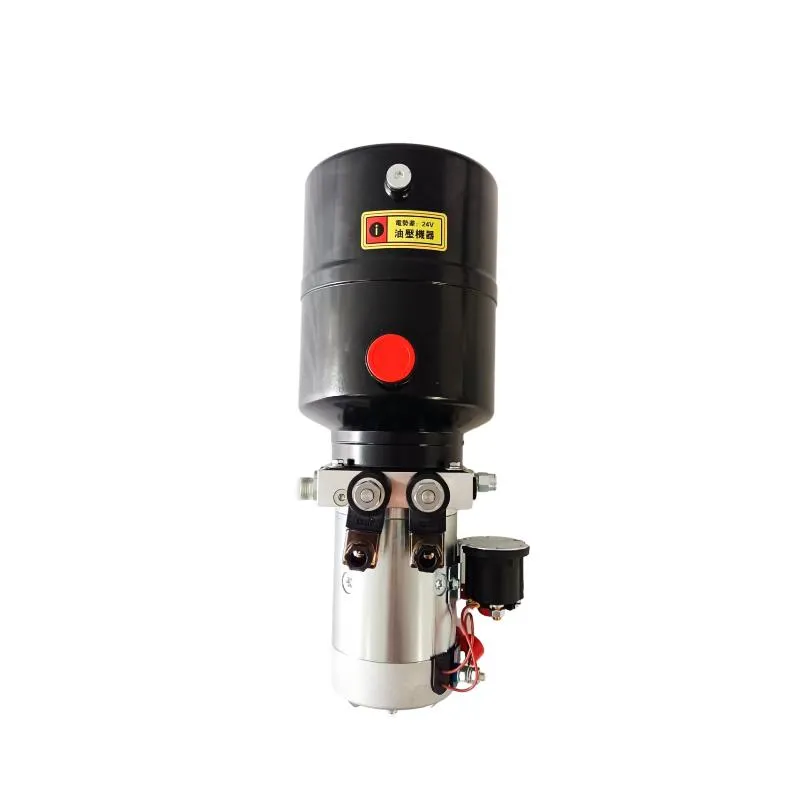Jul . 31, 2024 21:16 Back to list
Exploring the Latest Innovations in Hydraulic Cylinder Products for Enhanced Performance and Efficiency
Understanding Cylinder Hydraulic Products An Overview
Hydraulic systems are an indispensable part of many industries, ranging from construction and manufacturing to automotive and aerospace. Among the various components of hydraulic systems, hydraulic cylinders play a crucial role by converting hydraulic energy into mechanical energy. This article explores the essential aspects of cylinder hydraulic products, including their types, functions, and applications.
What is a Hydraulic Cylinder?
A hydraulic cylinder is a mechanical actuator that utilizes pressurized hydraulic fluid to generate linear motion and force. These cylinders are composed of a cylindrical barrel, a piston, and end caps. When hydraulic fluid is pumped into the cylinder, it pushes the piston, resulting in movement. The force produced can be incredibly powerful, making hydraulic cylinders suitable for tasks that require significant torque and lifting capability.
Types of Hydraulic Cylinders
Hydraulic cylinders come in various forms, tailored to suit specific applications and requirements. The most common types include
1. Double-Acting Cylinders These cylinders can exert force in both the forward and reverse directions. They have ports on both ends, allowing hydraulic fluid to flow in and out, making them ideal for applications requiring continuous movement.
2. Single-Acting Cylinders These cylinders exert force in one direction only. They use gravity or a spring mechanism to return to the original position, making them simpler but less versatile than their double-acting counterparts.
3. Telescopic Cylinders Also known as stage cylinders, they consist of multiple nested cylinders that extend and retract in a telescopic manner. These are particularly useful when space is limited, as they can achieve significant extension with a minimal footprint.
cylinder hydraulic product

4. Rotary Actuators Although not traditional cylinders, hydraulic rotary actuators perform a similar function by converting hydraulic energy into rotational motion. They are essential in applications that require turning or spinning actions.
Applications of Hydraulic Cylinders
The applications of hydraulic cylinders are vast and varied. In the construction industry, hydraulic cylinders are used in equipment such as excavators, loaders, and cranes, where they lift heavy loads and perform precise movements. In manufacturing, they power machines for stamping, pressing, and bending materials, contributing to increased efficiency and productivity.
In the automotive sector, hydraulic cylinders are utilized in braking systems and lifting vehicles for maintenance. Aerospace applications involve hydraulic actuation for flight control systems, landing gear, and cargo handling. Even in the maritime industry, hydraulic cylinders play a pivotal role in controlling rudders, stabilizers, and other components of ships and submarines.
Advantages of Hydraulic Cylinders
One of the primary advantages of hydraulic cylinders is their ability to generate substantial force relative to their size. This characteristic allows for designs that are both compact and powerful, ideal for environments with space constraints. Additionally, hydraulic cylinders can provide smooth and controlled motions, making them suitable for precise applications.
Another notable benefit is their versatility. With various configurations and designs available, hydraulic cylinders can be customized to meet specific operational needs, thus enhancing their functionality across different fields.
Conclusion
As industries continue to advance and evolve, the importance of hydraulic cylinders will undoubtedly remain steadfast. Their ability to deliver powerful, reliable, and controlled motion is essential for the efficiency and effectiveness of various operations. Understanding the fundamentals of cylinder hydraulic products not only aids in selecting the right components for specific applications but also contributes to the ongoing innovation and improvement within hydraulic technology. Whether in construction, manufacturing, or beyond, the role of hydraulic cylinders will continue to shape the landscape of industrial operations for years to come.
-
Fork Lift Power Units - Hebei Shenghan | Efficiency, Reliability
NewsJul.13,2025
-
1.5-Ton Turbocharged Cylinder-Hebei Shenghan|Hydraulic Solution,Energy Efficiency
NewsJul.13,2025
-
Auto Hoist Power Units-Hebei Shenghan|Efficiency&Industrial Lifting
NewsJul.13,2025
-
Double Acting Power Units-Hebei Shenghan|Hydraulic Solutions,Industrial Efficiency
NewsJul.13,2025
-
1.5 Ton Lifting Cylinder 70/82-40-290-535 - High-Performance Hydraulic Solution | Hebei Shenghan
NewsJul.13,2025
-
Fork Lift Power Units - Hebei Shenghan | Efficiency&Reliability
NewsJul.13,2025
